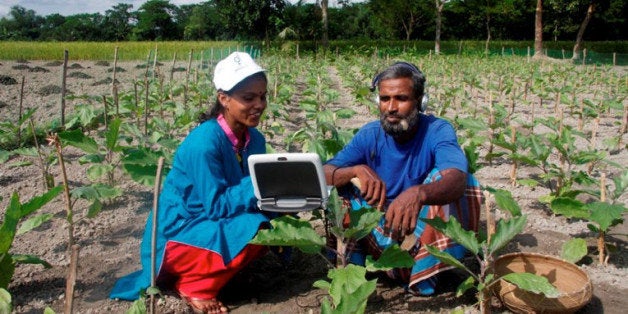
Innovation is at the heart of the world's most successful brands. Companies like Apple or Amazon lead their sectors, and through their creativity, change how we live our daily lives.
Creating an environment where true innovation can thrive, however, is difficult, and in the development sector, innovation often remains constrained.
Last year, NetHope and its members spent time reflecting on the topic of innovation in the international development and conservation sector. Months of dialogue revealed a need for increased focus on how technology can be used to improve not only core operations but delivery of services. Both are great ideas every NGO should consider and evaluate as part of their planning process. But the greater question at hand -- and the one that will truly impact the lives of millions -- is how we can broaden the conversation so that NGOs can fully realize the true power of technology.
To achieve such a shift in thinking, organizations must commit to structural changes which reimagine technology's role within an organization. Too often the focus is put solely on integrating technology into existing operations, ignoring the potential greater impact. It's not enough to replace fax machines with email or be able to run financial reports more quickly. Nor is it so simple to give away tablets to field staff and expect improved efficiency and effectiveness to follow.
Instead, what if organizations paused and considered what technology might unlock, and then began to imagine the operational and organizational structures needed to make the vision possible? In this particular discussion we might arrive at the solution that human powered technology isn't always the best approach. It might make sense to collect data through the use of sensors and track results automatically based on a set of established criteria. A recent newcomer worth examining for following this approach is SWEET Sense, a spinoff from Portland State University. This nonprofit uses sensors developed at the university to measure movement and water flow in water pumps. It then relays data when changes in specific factors are detected. Information gathered is then sent through cellular networks to technical staff who examine the data to determine location of pumps, number of uses, and maintenance requests.
Additionally, data could be used to design better interventions or we could use GIS to spot trends, connection points, and opportunities for collaboration that might otherwise not be easily apparent. One example of this is Grameen Foundation's AppLab in Kampala which develops tools that make use of information coming from its clients' microfinance transactions and information flows. The AppLab processes and analyses datasets from CKW Search for information on livestock, crops, and weather and Pulse -- an app that generates survey questions and syncs clients' questions and answers . Working in tandem, these two apps allow Grameen to evaluate clients' farms performance and agricultural program.
If we took this approach -- and if we learned from those that have done it successfully -- we would also see that innovation isn't something that happens once for the full promise to be recognized. Change is difficult, and for organizations to realize the benefits of new tools, attention must be paid to purposeful change management, effective leadership, and organizational evolution. Technology, after all, is just a tool -- and just like any individual must learn to use a new tool with training, context and relevance, organizations must also create the right environment for change to happen.
Donor interest is shifting towards how organizations are effectively leveraging information communication technology. In exchange for funds, donors are now expecting more and more decisions to be data driven and looking for measurable outcomes. At the same time they're also pushing for innovative thinking similar to what we've seen in the technology sector, asking NGOs to toss aside fear of pilots and embrace the popular Silicon Valley adage, "fail hard and fast."
Learning from other industries like publishing or photography that have already experienced this dynamic shift NGOs can learn how not to just survive the changing landscape but thrive. For many NGOs, now is the time to write the next chapter for their organization and identify, adapt, adjust, and integrate technology into the core parts of their business. Those who do will be poised to lead the sector and better serve end beneficiaries tomorrow.
NetHope is a partner of Cisco CSR. Cisco sponsors The Huffington Post's ImpactX section.